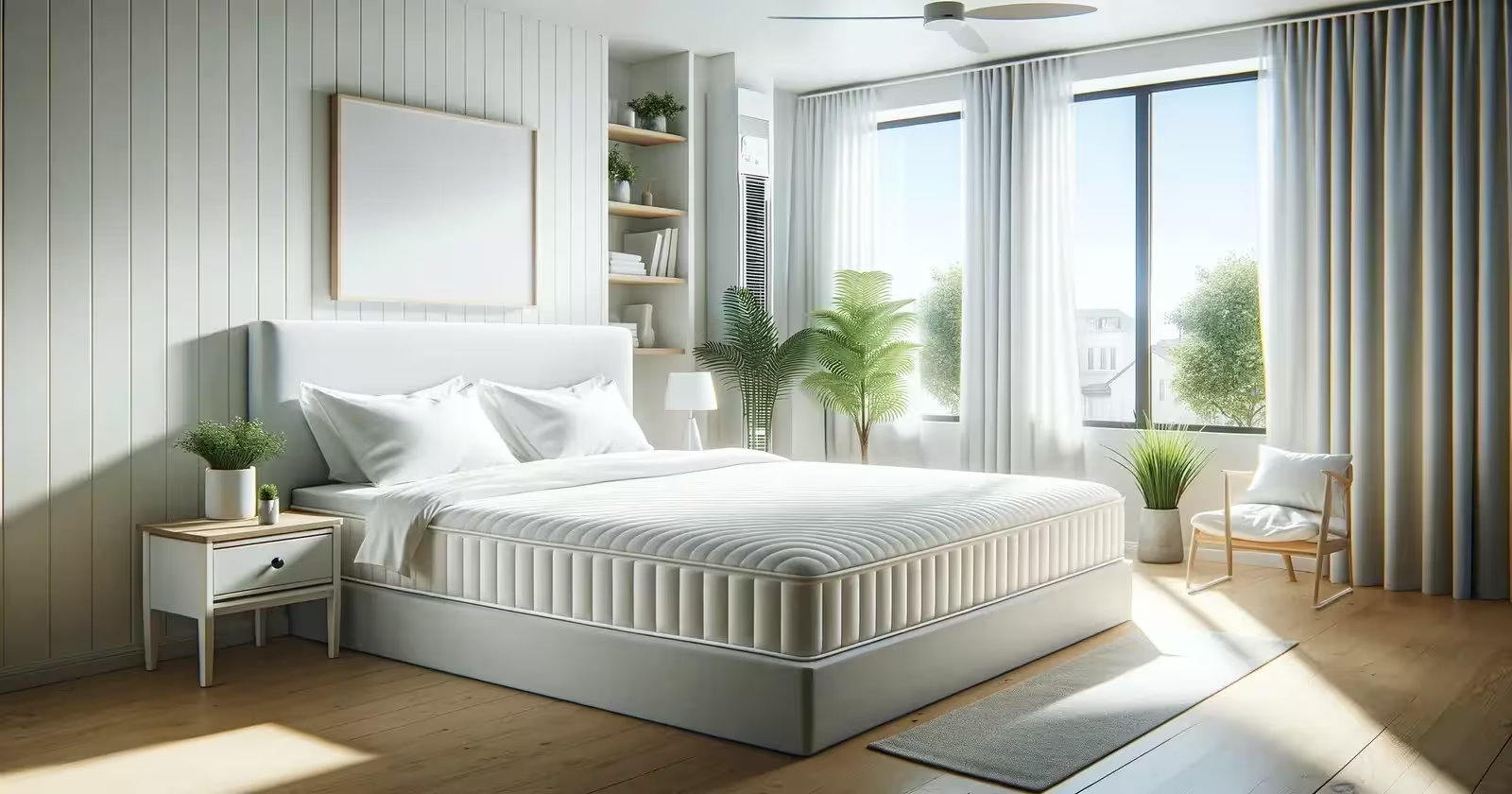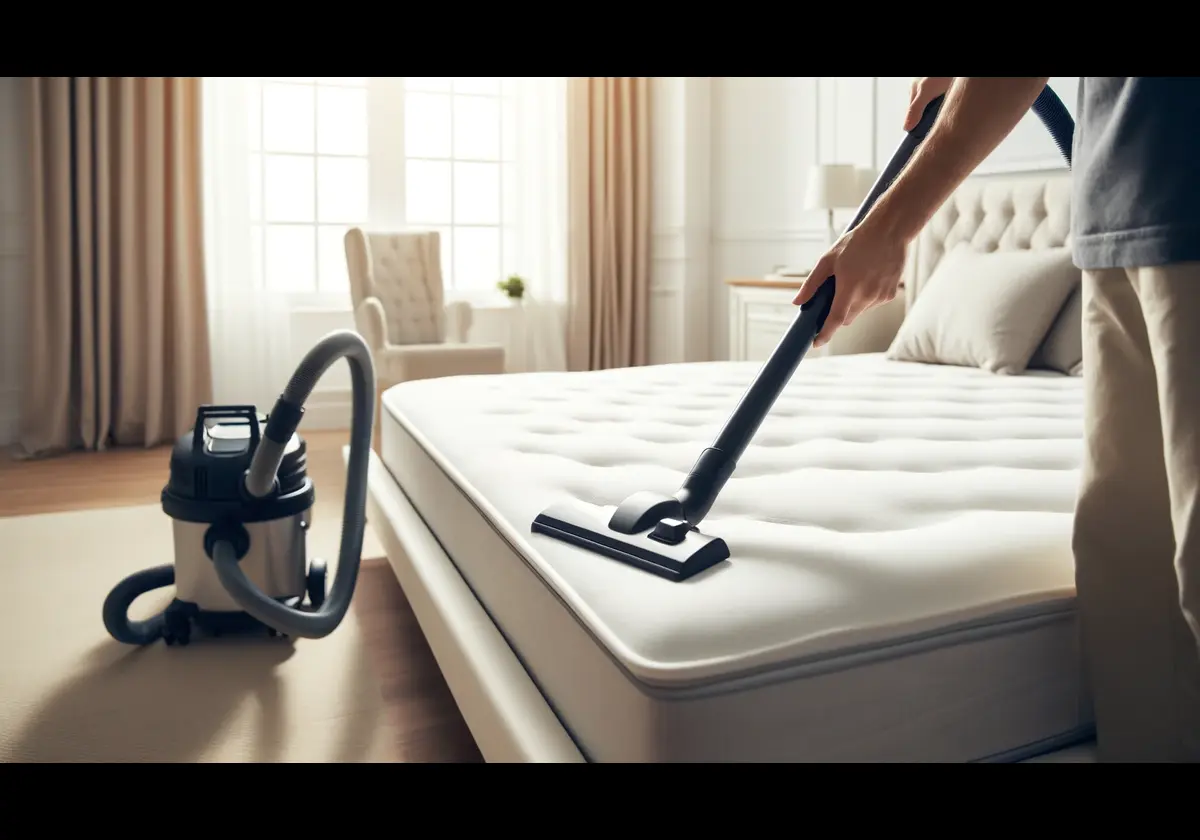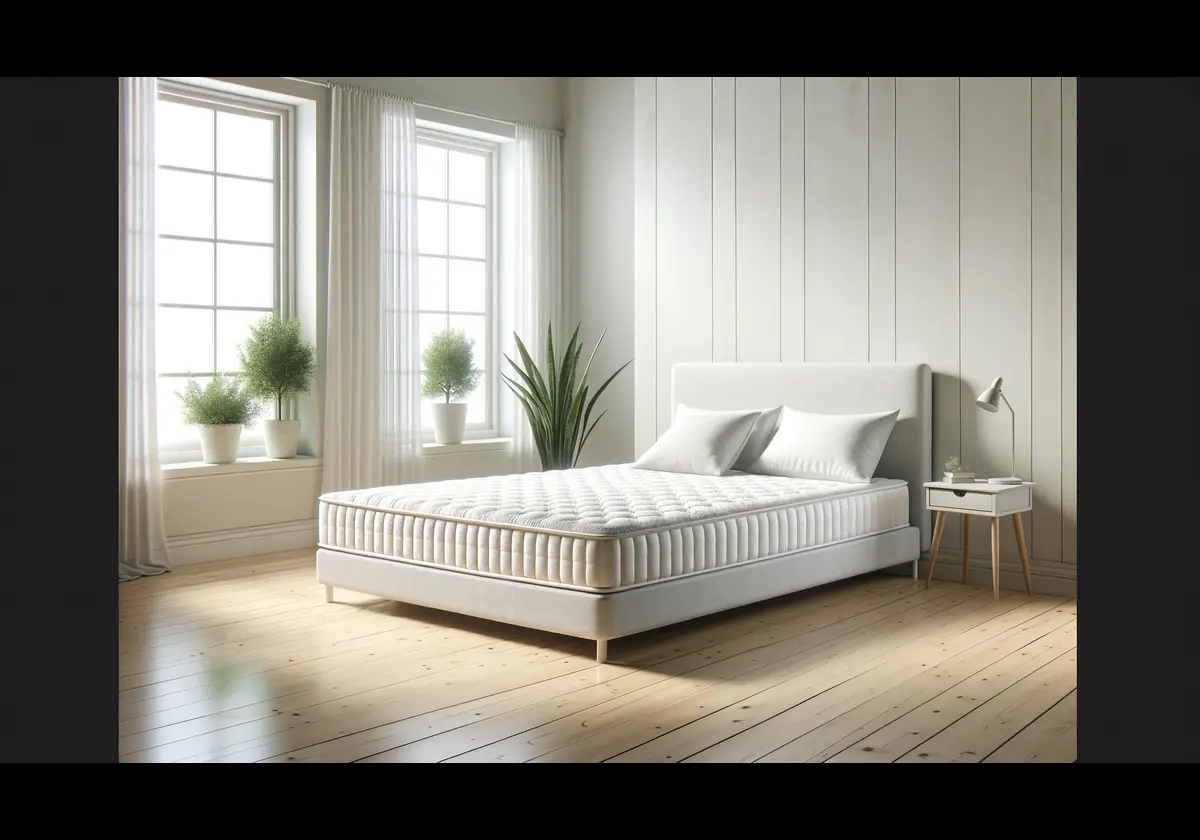Foam Mattress Allergies: Best Options For High Allergy Sufferers

Maybe you have foam mattress allergies? Are you tired of waking up congested and itchy? If you’re an allergy sufferer, your mattress might be to blame.
Foam mattresses, with their cozy embrace, often harbor allergens like dust mites and volatile organic compounds (VOCs) that can wreak havoc on sensitive individuals.
But don’t worry, there’s hope. This article helps you find the best foam mattress options for those plagued by allergies, ensuring you can sleep soundly without compromising your health.
Whether you seek natural latex, organic cotton, or hypoallergenic features, we’ve got you covered with top picks and essential tips to turn your bedroom into a sanctuary.
Ready to breathe easier and rest better? Let’s explore the world of foam mattresses designed with allergy sufferers in mind.
Understanding Foam Mattress Allergies
Foam mattress allergies can cause significant discomfort, disrupting your sleep. These allergies occur when your immune system reacts to substances in the foam mattress, treating them as harmful invaders.
What Are Foam Mattress Allergies?
Foam mattress allergies arise from the materials and chemicals used in these mattresses. Memory foam, for example, often contains a type of plastic called polyurethane and other chemicals that can release tiny particles into the air.
These particles, including substances like flame retardants and formaldehyde, can trigger allergic reactions in sensitive people.

Allergic Reactions Related to Foam Mattresses
When exposed to these allergens, the immune system may overreact, leading to various symptoms. The process where new mattresses release chemicals into the air, known as off-gassing, can be particularly problematic.
This release often produces a noticeable smell, which can cause immediate irritation for some people.
Additionally, dust mites, which thrive in the cozy environment of a mattress, can worsen allergic reactions. These tiny pests feed on dead skin cells, and their waste products are common allergens found in mattresses.
Common Symptoms
The symptoms of foam mattress allergies can vary widely but often include:
Understanding these reactions is crucial for managing symptoms and improving sleep quality. Opting for hypoallergenic mattresses, using protective covers, and maintaining a clean sleep environment can help reduce these allergic responses and enhance overall well-being.

Causes of Foam Mattress Allergies
Understanding the causes of foam mattress allergies is crucial for those who suffer from nighttime discomfort and health issues. Here’s a look at the primary culprits:
Materials in Foam Mattresses
Foam mattresses, especially memory foam, are made from various substances designed for comfort and durability. Most memory foam mattresses contain polyurethane, a type of plastic made by combining different chemicals.
These mattresses are often treated with additional substances to improve their properties, but these additives can pose health risks.
Chemicals in Foam Mattresses
Common chemicals in foam mattresses include flame retardants and other substances that can release tiny particles into your sleeping environment.
For example:
Impact of Synthetic vs. Natural Materials
Synthetic materials in foam mattresses are more likely to contain chemicals that cause allergic reactions. In contrast, natural materials such as organic cotton, wool, and natural latex are generally better for individuals with allergies.
They are less likely to emit harmful particles and can be more resistant to dust mites and mold. However, some people may still react to natural latex, so it’s essential to choose materials based on your specific sensitivities.
Dust Mites and Allergens
Dust mites thrive in the warm, humid environment of a mattress, feeding on dead skin cells shed by sleepers. These tiny pests are a significant source of allergens.
Their waste products can cause allergic reactions, leading to symptoms such as sneezing, coughing, and itchy eyes. Even foam mattresses, which are denser and less hospitable to mites than traditional spring mattresses, can harbor these pests.
How Dust Mites Thrive in Foam Mattresses
The structure of foam mattresses can create a breeding ground for dust mites. While the foam itself does not provide food for dust mites, the skin cells that accumulate on and within the mattress do. This makes regular cleaning and the use of protective covers essential to minimize exposure.
Allergic Reactions Caused by Dust Mite Excretions
The primary allergic reaction to dust mites comes from their waste products, which can trigger the body’s immune response. Symptoms of dust mite allergies include nasal congestion, sneezing, coughing, itchy and watery eyes, and in severe cases, asthma attacks.
Using allergen-proof mattress covers and maintaining a clean sleep environment can help reduce these reactions.

Identifying Symptoms of Foam Mattress Allergies
Foam mattress allergies can manifest in various ways, often causing significant discomfort. Recognizing the symptoms early can help in managing and mitigating the effects. Here’s a detailed look at the common symptoms and when to seek medical advice.
Common Allergy Symptoms
Respiratory problems are among the most common symptoms of foam mattress allergies. These can include:
Skin reactions are also prevalent among individuals allergic to foam mattresses. These reactions can range from mild to severe and include:
Other Symptoms: Headaches, Dizziness
Apart from respiratory and skin issues, other symptoms can also indicate foam mattress allergies:
When to Seek Medical Advice
It is crucial to seek medical attention if you experience severe or persistent symptoms. Here’s when you should consider consulting a healthcare professional:
Recognizing the symptoms of foam mattress allergies and understanding when to seek medical advice can greatly improve your quality of life and ensure a restful, healthy sleep environment.
If you suspect your mattress is causing allergic reactions, consider switching to hypoallergenic materials and using protective covers to reduce exposure to allergens
Choosing the Right Foam Mattress for Allergy Sufferers
Selecting the perfect foam mattress is crucial for allergy sufferers. With a variety of hypoallergenic options available, it’s essential to understand the features, materials, and brands that cater to your specific needs.
Hypoallergenic Foam Mattresses
Hypoallergenic mattresses are specifically designed to minimize the presence of common allergens like dust mites, mold, and pet dander. These mattresses often use materials that are resistant to these allergens, providing a healthier sleeping environment.
Features of Hypoallergenic Mattresses
Top Brands for Allergy Sufferers
Choosing the right materials is crucial for reducing allergen exposure. Here are some of the best materials for hypoallergenic mattresses:
Natural Latex
Organic Cotton
Certified Low-VOC Foam
Synthetic materials, especially those used in traditional foam mattresses, can release VOCs that may cause allergic reactions. Off-gassing can lead to symptoms such as headaches, dizziness, and respiratory issues.
To avoid this, choose mattresses made from natural or organic materials, and ensure they have proper certifications like CertiPUR-US.
In conclusion, allergy sufferers should prioritize hypoallergenic features, opt for natural and certified materials, and avoid mattresses with high levels of VOCs.
Brands like Nectar, Saatva, Birch, and Puffy offer excellent options that cater to these needs, ensuring a comfortable and allergen-free sleep environment.

Preventing Foam Mattress Allergies
Allergies can disrupt your sleep and overall well-being, but with the right preventative measures, you can create a healthier sleeping environment. Here’s how to tackle foam mattress allergies effectively.
Mattress Covers and Protectors
Benefits of Hypoallergenic Mattress Encasements Hypoallergenic mattress encasements act as a barrier against dust mites, pet dander, and other allergens. They completely encase the mattress, preventing allergens from penetrating and accumulating within the mattress material. This can significantly reduce allergic reactions and improve sleep quality.
Recommended Covers for Effective Allergen Barriers
Regular Cleaning and Maintenance
How to Clean a Foam Mattress to Reduce Allergens Regular cleaning of your foam mattress is crucial to minimize allergens. Here’s a step-by-step guide:
Tips for Maintaining an Allergen-Free Sleeping Environment
By incorporating these practices, you can significantly reduce the presence of allergens in your sleeping environment, leading to better health and a more restful night’s sleep.

Alternatives to Foam Mattresses
Exploring alternatives to foam mattresses can lead to finding a healthier and more comfortable sleep solution, especially for those with allergies. Here’s a comprehensive look at other mattress types, their pros and cons for allergy sufferers, and some top natural and organic options.
Exploring Other Mattress Types
Innerspring and Hybrid Mattresses
Innerspring Mattresses Innerspring mattresses are characterized by their coil support system, which offers a firm and supportive sleep surface. The coils promote airflow, making these mattresses cooler than foam options.
Pros:
Cons:
Hybrid Mattresses Hybrid mattresses combine the supportive qualities of innerspring coils with the comfort of foam or latex layers. This blend offers a balance of support, pressure relief, and breathability.
Pros:
Cons:
Pros and Cons of Different Mattress Types for Allergy Sufferers
For allergy sufferers, choosing the right mattress is crucial. Innerspring mattresses, with their enhanced airflow, are less likely to harbor dust mites and mold compared to foam mattresses.
Hybrids offer additional benefits by combining materials that are often hypoallergenic, such as natural latex or organic cotton.
Natural and Organic Mattress Options
Benefits of Natural and Organic Materials Natural and organic mattresses are made from materials like natural latex, organic cotton, and wool, which are less likely to trigger allergies.
These materials are also free from harmful chemicals and VOCs, providing a safer sleep environment.
Top Brands and Products to Consider:
Exploring alternatives to foam mattresses can provide significant benefits for allergy sufferers. Innerspring and hybrid mattresses offer various advantages, including better airflow and support.
Opting for natural and organic materials can enhance sleep quality and reduce allergic reactions. Investing in the right mattress is essential for creating a healthy and comfortable sleep environment.
3 Top Rated Foam Mattresses for Allergy Relief
| Image | Product | Features | Price |
|---|---|---|---|
 |
| Check Price | |
 |
| Check Price | |
 |
| Check Price |
Overcoming Foam Mattress Allergies
One notable study shows a user who suffered from severe respiratory issues and skin rashes due to her foam mattress. After switching to a hypoallergenic mattress made of natural latex and organic cotton, she noticed a significant improvement in her symptoms.
She also emphasized the importance of using a high-quality mattress encasement to prevent dust mites and allergens from accumulating.
Tips and Tricks from Allergy Sufferers
Individuals who have successfully managed their foam mattress allergies often share the following tips:

Insights from Allergists and Sleep Specialists
Experts emphasize the importance of choosing hypoallergenic mattresses and maintaining a clean sleeping environment.
According to Dr. McMorris from the University of Michigan, using mattresses made from natural latex and organic cotton can significantly reduce exposure to allergens. He also recommends washing bedding regularly in hot water to eliminate dust mites and other allergens.
Dr. Ryan, a sleep specialist, advises patients to avoid synthetic materials that off-gas harmful chemicals. He suggests opting for mattresses that are CertiPUR-US certified, as they meet rigorous standards for emissions, content, and durability.
Recommendations for Managing Mattress-Related Allergies
These strategies and expert recommendations highlight the importance of proactive measures in managing foam mattress allergies, ensuring a healthier and more restful sleep environment.
For further information on hypoallergenic mattresses and tips on managing allergies, you can visit resources like Sleep Foundation ENT and Allergy Associates.
Final Thoughts
When considering a foam mattress, especially if you suffer from foam mattress allergies, it’s crucial to weigh the pros and cons. Foam mattresses provide excellent support but can harbor allergens. Hypoallergenic options made from natural latex and organic materials offer a safer alternative.
To make an informed decision, assess the materials, hypoallergenic properties, and certifications like CertiPUR-US. Invest in hypoallergenic mattress covers, maintain regular cleaning, and ensure good bedroom ventilation.

Yanie Wijaya
CFO @ wijayafoam.com
Yanie Wijaya is a leading expert in the foam mattress industry with over 15 years of experience. As the owner of Wijaya Foam and key brands like Asia Deluxe and Eversoft Rebonded, she has shaped mattress manufacturing across Southeast Asia. Outside of her professional life, Yanie enjoys motherhood and Korean cinema. Her deep industry knowledge makes her a trusted authority in foam mattress innovation.

